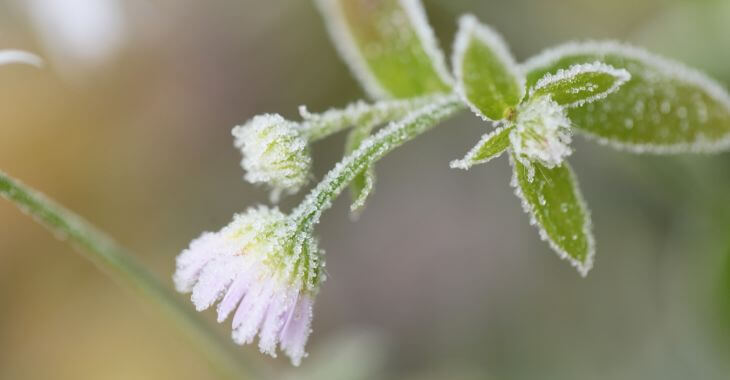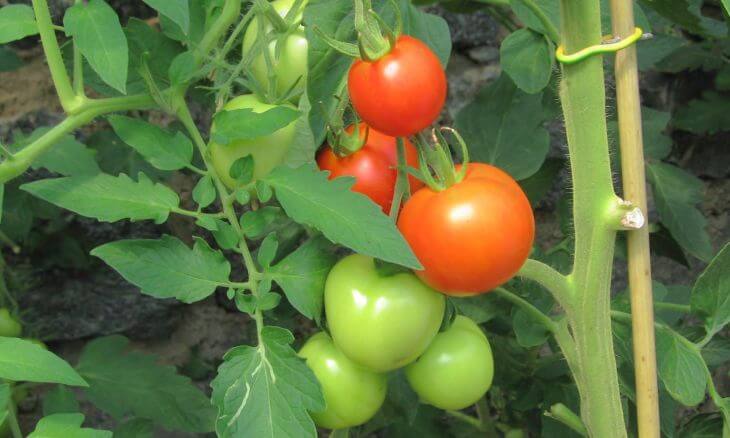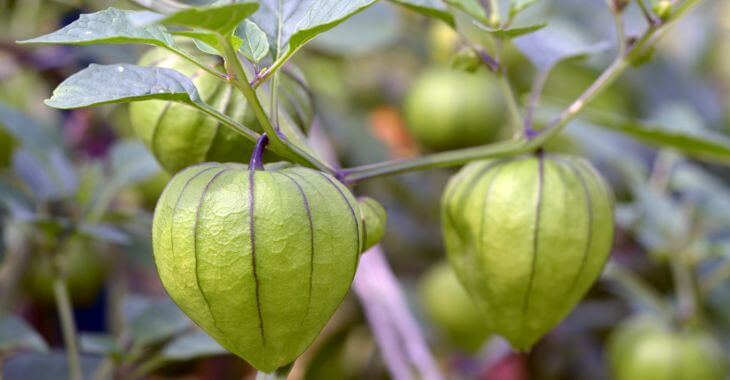How to Protect Plants from Frost

Plants have a high water content flowing through their leaves, stems and blooms. While trees and cold-season plants may be able to withstand freezing temperatures in maturity, most warm-season plants can be severely damaged or even killed from an overnight frost. Gardeners and even houseplant lovers need to be aware of the dangers of frost and how freezing temperatures can impact their plants. Here is a guide to protect plants from frost to keep a cold night from ruining your vegetable, tomato and other plants.
When temperatures drop below freezing level (32 degrees Fahrenheit), the water inside the plants can freeze. This is called frost – you can often see frozen water on the blades of grass in your lawn or on leaves of the trees. While it may look pretty, it can be disastrous to fledgling plants that are just forming their new roots in your vegetable garden or in planters on your deck. Spring and fall can have colder nights that hit without warning. Frost can destroy young annual plants or cause mature plants/trees to lose their fruit or vegetables.
You cannot always rely on the weather forecast to tell you when to expect a drop in temperatures. To avoid damage to your garden full of young plants or sprouts in the early spring, or to avoid losing fruit or vegetables from plants in the fall, you need to know how to protect plants from frost. Many plants cannot be saved once they have been damaged from freezing temperatures, so in this case, an ounce of prevention is worth more than a pound of cure.
How to Protect Potted Plants from Frost
Potted plants that have been inside all winter can thrive when given a chance to be in the open air and sunshine. However, many flowers and potted plants are fragile, as they tend to be designed for warmer climates. If you like to have your potted plants outside in the warmer seasons, be aware of the cold spring and fall nights. It is best to bring in those potted plants in the spring and fall at night, then move them back outside for the daytime sunshine.
How to Protect Tomato Plants from Frost
One of the most vulnerable fruit-bearing plants to frost is the tomato plant. If a tomato plant is frozen, it will likely not survive. Many gardeners have sadly watched their carefully nurtured tomato plants wilt and die after a night exposed to freezing temperatures. Often, it is too late in the season to start over with new tomato plants and the potential harvest is lost from one or all the tomato plants in the garden. Here is how to protect tomato plants from frost in the spring:
- Keep tomato plants in planters inside until there are no more threats of frost.
- Use clear plastic containers to cover young tomato plants at night.
- Keep tomato plants well-watered to help them recover from light frost.
- Use string lights to add warmth and light to your row of tomato plants.
Spring is not the only threat to tomato plants. In the fall, an early freeze can harm tomato plants and the fruit on the vine. If there is a possibility of frost, cover your tomato plants with a tarp or plastic to keep them protected from damage.

How to Protect Vegetable Plants from Frost
In the late spring, you may still experience a few nights of freezing temperatures that can harm your vegetable garden full of early sprouts. These tender plants need extra protection from the cold. Keep an eye on the weather forecast and look to the sky, Clear nights are more likely to drop to cooler temperatures. All plants fair better against cold weather when they are healthy and hydrated, but here is how to protect vegetable plants from frost in the spring:
- Use cloches (plastic or glass domes) to cover your seedlings at night.
- Cover your new vegetable sprouts with mulch or hay to help with insulation.
- Place containers of water throughout rows and cover rows with a tarp or sheet at night – the water will become warmer during the day and provide heat under the covering.
Once your vegetable plants have survived the spring frost, they still need to withstand early fall frost if they still have produce. Using tarps, old bed sheets or plastic to cover your fall harvest vegetables can protect them from prematurely losing their produce. If the night will be overly cold, below 30 degrees Fahrenheit, place a light under the covering for extra heat. Do not use LED bulbs, as they do not emit heat, only light.
Now you know how to protect plants from frost and keep them safe from freezing temperatures. With a few precautions and preemptive efforts, you can protect your potted, tomato and vegetable plants from unnecessary harm on those cold, frosty spring and fall nights.


